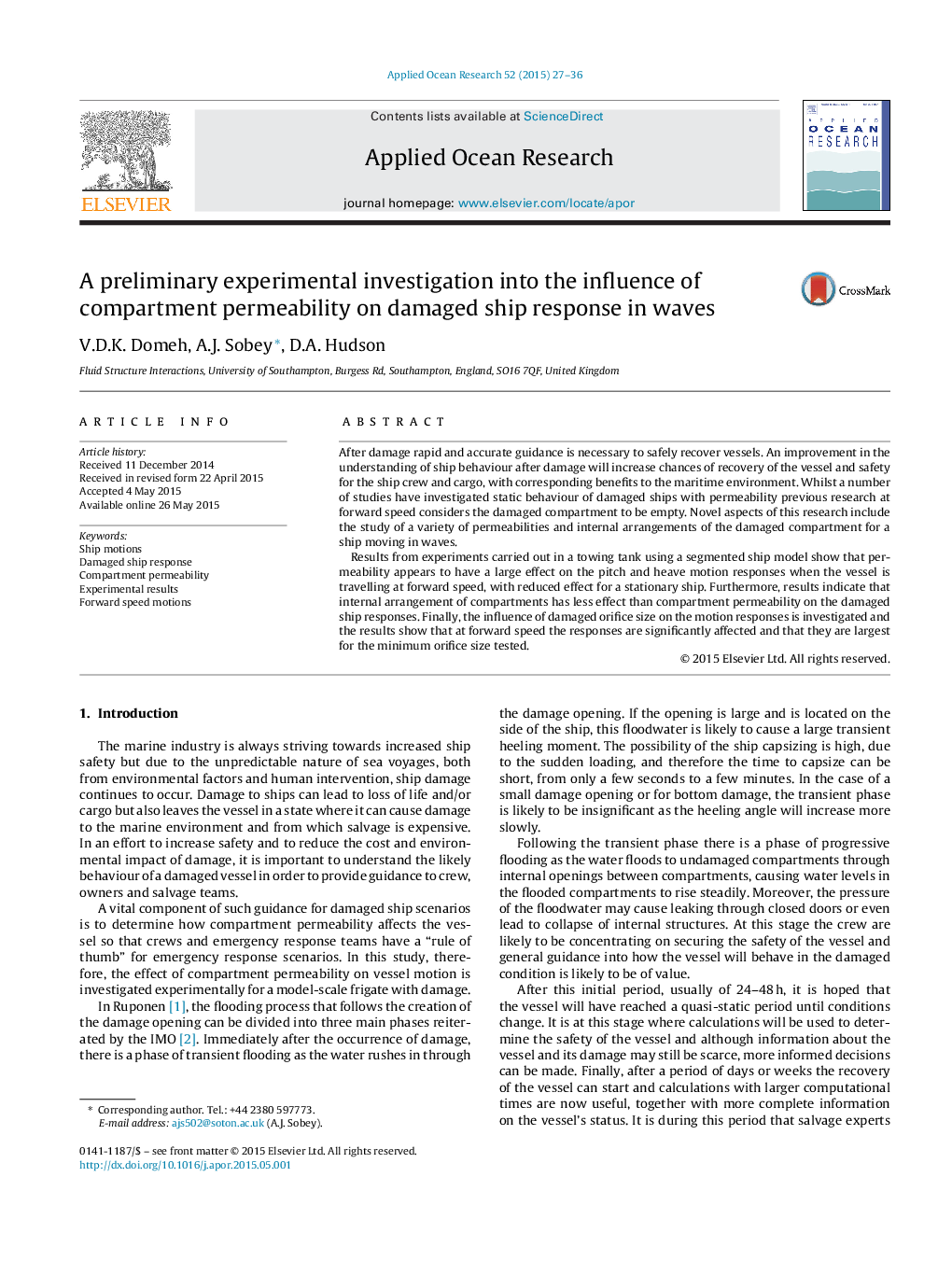| Article ID | Journal | Published Year | Pages | File Type |
|---|---|---|---|---|
| 1719928 | Applied Ocean Research | 2015 | 10 Pages |
•Towing and self-propulsion are the most cost effective and often the most environmentally friendly methods of ship recovery.•These types of recovery involve damaged vessels moving at forward speed but little research is done in this area.•Compartment permeability and orifice size has a greater effect on pitch and heave responses when the vessel is travelling at forward speed.•Whilst tests on the intact vessel show good repeatability, the variation between nominally identical tests is larger than would be expected for the damaged vessel.
After damage rapid and accurate guidance is necessary to safely recover vessels. An improvement in the understanding of ship behaviour after damage will increase chances of recovery of the vessel and safety for the ship crew and cargo, with corresponding benefits to the maritime environment. Whilst a number of studies have investigated static behaviour of damaged ships with permeability previous research at forward speed considers the damaged compartment to be empty. Novel aspects of this research include the study of a variety of permeabilities and internal arrangements of the damaged compartment for a ship moving in waves.Results from experiments carried out in a towing tank using a segmented ship model show that permeability appears to have a large effect on the pitch and heave motion responses when the vessel is travelling at forward speed, with reduced effect for a stationary ship. Furthermore, results indicate that internal arrangement of compartments has less effect than compartment permeability on the damaged ship responses. Finally, the influence of damaged orifice size on the motion responses is investigated and the results show that at forward speed the responses are significantly affected and that they are largest for the minimum orifice size tested.
